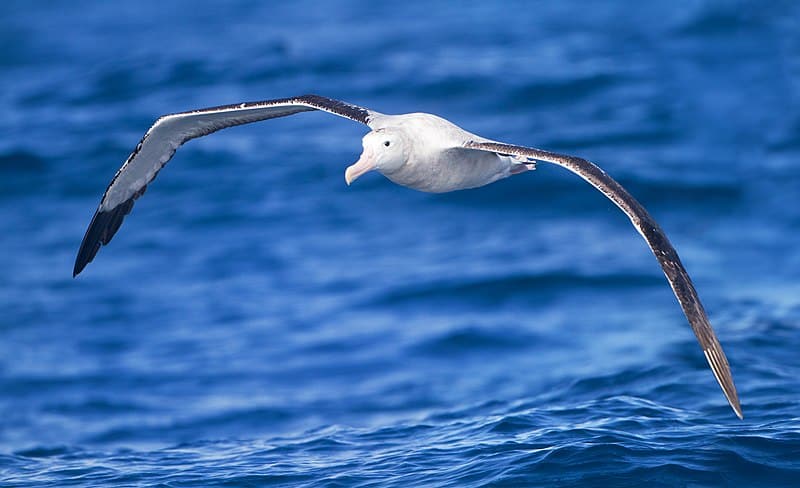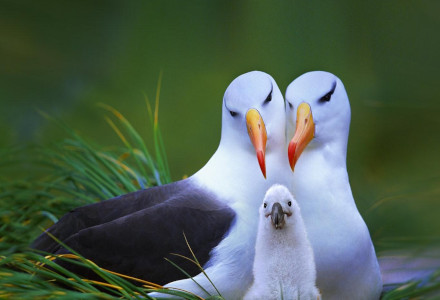
Photographer: JJ Harison
CC License: https://bit.ly/1p2b8Ke
Albatross Facts
- Most notably, the gorgeous Albatross ranks as an extremely large, sea-going bird. That ranking occurs because its wingspan is the second greatest of any bird. Only the Andean Condor slightly exceeds it.
- Of further interest is the fact that it remains a highly agile flier, despite its great size. Because of this, the animal covers great distances using principles such soaring on selected currents of air.
- Utilizing ocean air currents, individuals sometimes cover as much as 600 miles (965 km) in a single day. This the individuals sometimes manage to accomplish without flapping their wings once.
- In addition, experts recognize 22 separate species of the amazing Albatross. Sadly, however, the IUCN currently ranks all of them at levels of concern ranging from Vulnerable to Critically Endangered.
- Finally, the different species face a variety of threats to their continued existence. These include such factors as pollution, climate change, introduced species, and commercial fishing practices.
Related Articles
Bald Eagle Blue Footed Booby Arctic Tern
Albatross Physical Description
Firstly, given the number of different types of Albatross, some variations in appearance occur among them. However, these remain minor. For one thing, none of the various species display sexual dimorphism.
But, the greatest variation among the different members of the family occurs in the wingspan. That’s because this ranges from 5.7 ft (1.75 m) for the smallest species to 11.2 ft (3.4 m) to the largest among them.
Yet the color patterns remain remarkably uniform among them. Due to this, the majority display a dark upper-wing. Also, the undersides most typically display combinations of black and white markings in random patterns.
- Kingdom: Animalia
- Phylum: Chordata
- Class: Aves
- Order: Procellariiformes
- Family: Diomedeidae
Photographer: JJ Harison
CC License: https://bit.ly/1p2b8Ke
Albatross Distribution, Habitat, and Ecology
This rather majestic family of birds collectively known as the Albatross lives throughout the Southern Ocean and North Pacific. Furthermore, individuals remain on the move almost constantly when not actively nesting.
Also, the gorgeous birds prefer to nest on craggy shorelines. Further, it lives much longer than many other birds. This lifespan may reach 50 years. Because of this, it has less pressure to reproduce in numbers, so typically only a single egg is laid at a time.
The stunning Albatross also evolved as a colonial species, typically living and moving in large groups. In addition, it also feeds principally on fish, krill, and squid, hunting opportunistically. But, it will also scavenge carrion if and when available.
Finally, all member of this genus now enjoy a certain measure of protection. That’s because, in 2004, the Agreement of the Conservation of Albatrosses and Petrels went into effect. A total of 13 countries have ratified it to date.
Species Sharing Its Range
Check out our other articles on 9 of the Weirdest Animals on Earth, Musk Beetle, Reynisfjara Beach, Marine Iguana, Wallace’s Flying Frog, Hummingbird Fuschia, Okapi

